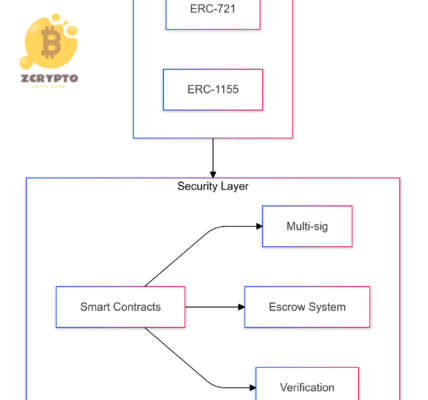What is the Chi-Square Statistic?
Definition and Formula
The chi-square statistic is a measure used to determine how well observed data fit expected distributions. It is calculated using the formula:
[ \chi^2 = \sum \frac{(Oi – Ei)^2}{E_i} ]
where ( Oi ) is the observed value and ( Ei ) is the expected value under a null hypothesis.
Degrees of Freedom
The degrees of freedom are crucial in determining the critical value of the chi-square statistic. This concept refers to the number of independent pieces of information used to calculate the statistic. For example, if you are analyzing data across different categories, the degrees of freedom would be one less than the number of categories.
Types of Chi-Square Tests
There are two main types of chi-square tests: the test of independence and the goodness-of-fit test. The test of independence checks whether there is a significant association between two categorical variables. For instance, you might use this test to see if there is a relationship between interest rates and stock prices. The goodness-of-fit test, on the other hand, evaluates whether observed data conform to a specific theoretical distribution.
Applications in Financial Analysis
Hypothesis Testing
In financial analysis, the chi-square statistic is often used for hypothesis testing. For example, you might want to test whether changes in interest rates are independent of changes in stock prices. By using a chi-square test of independence, you can determine if there is a significant relationship between these variables. Similarly, goodness-of-fit tests can be used to evaluate if a financial model accurately represents real-world data.
Risk Assessment and Portfolio Management
The chi-square distribution plays a vital role in risk assessment and portfolio management. By analyzing asset return variability using the chi-square distribution, analysts can better understand and manage risk. This helps in creating diversified portfolios that minimize risk while maximizing returns. Additionally, the chi-square statistic aids in evaluating the homogeneity of financial data across different categories, ensuring that investments are well-balanced and resilient.
Model Validation
Financial models need to be robust and able to withstand various economic scenarios. The chi-square statistic is instrumental in stress testing these models. By simulating extreme conditions and using the chi-square statistic to evaluate model performance, analysts can gauge how well their models will hold up under stress. This ensures that investment decisions are based on reliable and resilient models.
Using CHISQ.DIST.RT in Excel
Function Overview
Excel provides a convenient function called CHISQ.DIST.RT for calculating the right-tailed probability of the chi-square distribution. This function takes three parameters: the chi-square statistic, degrees of freedom, and a cumulative argument (which should be set to TRUE for right-tailed probabilities).
Practical Example
To illustrate how to use CHISQ.DIST.RT in Excel for financial analysis, consider an example where you want to analyze the proportion of sales across different regions. Here’s a step-by-step guide:
-
Calculate the Chi-Square Statistic: Use your observed and expected values to calculate the chi-square statistic.
-
Determine Degrees of Freedom: Calculate the degrees of freedom based on your data categories.
-
Use CHISQ.DIST.RT: Input your calculated chi-square statistic and degrees of freedom into the CHISQ.DIST.RT function to get the right-tailed probability.
-
Interpret Results: Based on this probability, you can determine if there is a significant difference between observed and expected sales proportions across regions.
Case Studies and Examples
Testing Independence
Let’s consider an example where we want to test if there is an association between student gender and course choice. Here’s how you would use a chi-square test of independence:
-
Collect Data: Gather data on student gender and course choices.
-
Calculate Expected Frequencies: Determine expected frequencies under the null hypothesis that gender and course choice are independent.
-
Calculate Chi-Square Statistic: Use observed frequencies and expected frequencies to calculate the chi-square statistic.
-
Determine Degrees of Freedom: Calculate degrees of freedom based on your categories (e.g., gender x course).
-
Find Critical Value or P-Value: Use tables or software like Excel’s CHISQ.DIST.RT function to find out if your calculated chi-square value is significant.
Goodness-of-Fit Test
Another common application is testing if observed data fits a theoretical distribution. For instance, let’s say you want to check if actual coin toss results conform to what you would expect from a fair coin:
-
Collect Data: Record results from multiple coin tosses.
-
Calculate Expected Frequencies: Determine expected frequencies under the null hypothesis that each toss has an equal chance of heads or tails.
-
Calculate Chi-Square Statistic: Compare observed frequencies with expected frequencies using the chi-square formula.
-
Determine Degrees of Freedom: Calculate degrees of freedom based on your categories (heads/tails).
-
Find Critical Value or P-Value: Use tables or software like Excel’s CHISQ.DIST.RT function to determine if your calculated chi-square value indicates significant deviation from theoretical expectations.
References
-
Financial Analysis with Excel, John Wiley & Sons.
-
Excel Functions for Statistical Analysis, Microsoft Documentation.
-
Statistical Methods for Financial Analysis, Springer.
This article has provided a comprehensive overview of how the chi-square statistic can be applied in various aspects of financial analysis and investment decision-making. Whether you’re testing hypotheses or validating models, this versatile statistical tool offers invaluable insights that can enhance your analytical capabilities significantly.





